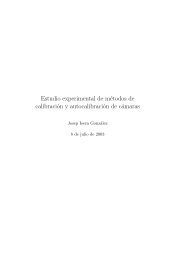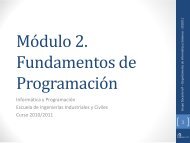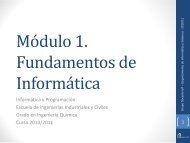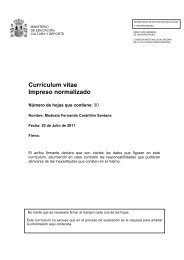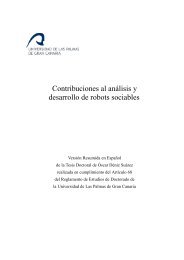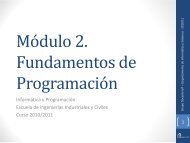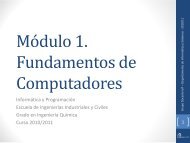PhD Document - Universidad de Las Palmas de Gran Canaria
PhD Document - Universidad de Las Palmas de Gran Canaria
PhD Document - Universidad de Las Palmas de Gran Canaria
Create successful ePaper yourself
Turn your PDF publications into a flip-book with our unique Google optimized e-Paper software.
CHAPTER 1. INTRODUCTION<br />
Traditional robots can carry out tasks that are well beyond human capabilities, with<br />
greater precision, no risk, and a large number of times. Then why so much interest in social<br />
robots?<br />
Admittedly robots are built with the aim of imitating or reproducing human intelli-<br />
gence. "Before" social robotics, most robots excelled at certain tasks, although they were<br />
incapable of doing other "simple" things, not even in a partial way. Almost in an uncon-<br />
scious fashion, researchers realized that those robots were extremely practical, but were not<br />
consi<strong>de</strong>red more intelligent (at least by the general public). In a sense, the more practical<br />
and precise the robot, the less human it was consi<strong>de</strong>red.<br />
The fact is that humans have a wi<strong>de</strong> range of abilities. Comparatively, robots tend<br />
to have far fewer abilities, although with high proficiency levels, in some cases even higher<br />
than in humans (see Figure 1.1). Such performance unbalance may be key to building social<br />
robots. It suggests that two necessary conditions for achieving a more "human" robot may<br />
be:<br />
1. to replicate a large number of human abilities, and<br />
2. that these abilities have similar <strong>de</strong>velopment levels.<br />
level of <strong>de</strong>velopment/proficiency<br />
abilities<br />
level of <strong>de</strong>velopment/proficiency<br />
abilities<br />
Figure 1.1: Abilities vs. level of <strong>de</strong>velopment. On the left: human performance. On the<br />
right: typical robot performance.<br />
Human intelligence does not seem to be restricted to certain abilities. According to<br />
Gardner’s theory [Gardner, 1983], now wi<strong>de</strong>ly accepted, human intelligence is not a unitary<br />
capacity that can be measured by IQ tests. He proposes eight classes of intelligence (see Ta-<br />
ble 1.1 ): linguistic, musical, logical-mathematical, spatial, bodily-kinesthetic, interpersonal,<br />
intrapersonal and naturalist. Intelligence has two meanings. First, it is a species-specific<br />
2



